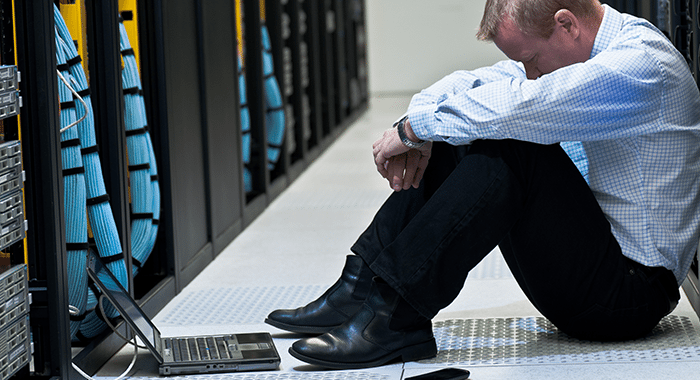Protecting Your Business – 7 Essential Disaster Recovery Questions for SMBs
According to research by the Ponemon Institute, the average cost of an unplanned data center outage in 2015 was $740,357. A report by Verizon showed even small data breaches — those with fewer than 100 files lost – may cost between $18,120 and $35,730. The top causes of technology outages include: equipment failure, UPS failure, cybercrime, and human error. What will you do if your technology infrastructure experiences an unexpected failure?
Consider 7 questions to help identify and address potential gaps in your disaster readiness:
1. What are the goals of a disaster recovery plan?
The goals of a disaster recovery plan include: minimizing operational downtime and economic impact, limiting disruption and damage, establishing alternative operations, training personnel, and quickly restoring service. A good disaster recovery plan is regularly updated with changes in the data center and business environment, incorporates lessons learned, and helps bridge gaps.
2. Do you have an accurate technology inventory?
A comprehensive inventory of hardware (e.g. servers, desktops, laptops and wireless devices) and software applications provides the framework for your disaster recovery plan. Within the inventory, identify critical software applications and data as well as the hardware required to run them.
3. What’s the back-up plan?
With the exponential growth of data and its distribution throughout the network, back-up strategies are challenging. A few considerations:
- An offsite or cloud back-up is essential.
- Ensure critical information is backed up on a regular schedule and the security of the back-up is at the same level as the original data.
- Consider options like DRaaS, or Disaster Recovery as a Service which provides data recovery, cloud based systems, and enhanced functions to ensure continuity of services.
- Test backups periodically to assure the backup can be restored to full service.
4. Are you testing?
For each critical system in your data center, practice responding to sudden failure. Consider scheduling an outage to test various aspects of the response plan. Drills and test scenarios help employees practice planned responses and procedures. Testing also provides an opportunity for training the extended team and identifying lessons learned to strengthen the disaster recovery plan.
5. Is your UPS ready?
Uninterruptible Power Supply (UPS) failure, specifically UPS battery failure, is among the top causes of data center outages. Schedule regular resistance testing of your systems and consider power monitoring equipment which will enable you to test, manage loads, and monitor the status of your facility’s operation and power.
6. What is the Role of Redundant Solutions?
Having redundant equipment in place can reduce recovery time and the damage of an unplanned data center outage. For example, critical servers should have a backup power supply installed to ensure the server doesn’t go down if the power fails. Other aspects of redundancy planning may include power, electrical grids, internet circuits, hardware, and spare parts.
For mission critical systems such as medical facilities or other systems which must be available 24/7/365, external generators and contracted fuel delivery services would be appropriate to assure system uptime during complete electrical grid failures.
7. How Can You Strengthen Partnerships?
In today’s complex technology environment, the right partners are more important than ever. In your disaster recovery plan identify key partners in specialty areas like contractors, security, network support, and others who may provide support.
When it comes to hardware and software, the Vertiv/Liebert team of data center experts is here to help you develop a data center as dynamic as your business. We offer a portfolio of intelligent, rapidly deployable hardware and software solutions for power, thermal, and infrastructure management.
Unexpected failures and natural disasters can pose serious hazards with potentially devastating effects. By planning for these unexpected failures and natural disasters you will be able to minimize the cost of outages associated with them. We hope these questions help you consider ways to protect your business by addressing weaknesses in your disaster recovery plan.
Need help working through your disaster recovery plan? More information on disaster recovery planning is available on the US Department of Homeland Security website, or contact us to schedule a call with one of our engineers and learn how we can help you protect your data center.

